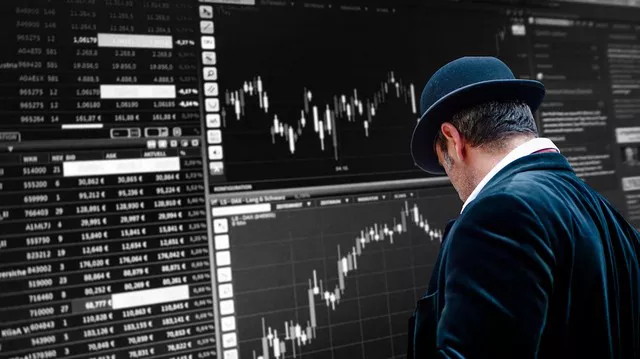Introduction
In the dynamic landscape of financial markets, understanding the nuances of different trading platforms is crucial for investors and traders alike. Among the key players in the derivatives market are the Chicago Mercantile Exchange (CME) and the Chicago Board Options Exchange (CBOE). While both facilitate trading in various financial instruments, they differ in their product offerings, market structure, and regulatory frameworks. This article aims to delve into the disparities between CME and CBOE, providing insights for market participants seeking clarity in their trading decisions.
Market Overview
The CME and CBOE are renowned exchanges located in Chicago, the heart of the derivatives market. Established in 1898, the CME has a long-standing history and is one of the largest futures exchanges globally. On the other hand, the CBOE, founded in 1973, initially specialized in options trading and later expanded its product range to include futures contracts.
Product Offerings
One of the primary distinctions between CME and CBOE lies in their product offerings. The CME predominantly focuses on futures contracts across various asset classes, including commodities, currencies, interest rates, and equity indices. Its diverse range of futures contracts caters to the hedging and speculative needs of institutional investors, corporations, and individual traders.
Conversely, the CBOE initially gained prominence as the first exchange to offer listed options contracts. While options remain a significant part of its product portfolio, the CBOE has also ventured into futures trading, albeit on a smaller scale compared to the CME. Additionally, the CBOE is renowned for its proprietary volatility index, the VIX, which serves as a barometer for market sentiment and volatility expectations.
Market Structure
Another key difference between the CME and CBOE is their market structure. The CME operates as a centralized marketplace where buyers and sellers converge to trade standardized futures contracts. Its electronic trading platform enables efficient price discovery and liquidity provision, with round-the-clock trading sessions catering to global participants across different time zones.
In contrast, the CBOE operates both a physical trading floor, where open outcry trading occurs, and an electronic trading platform. While open outcry trading has diminished over the years, it still holds significance for certain options contracts, fostering human interaction and price discovery. The hybrid market structure of the CBOE offers flexibility to traders who prefer traditional floor-based trading or electronic execution.
Regulatory Framework
Regulation plays a pivotal role in shaping the operations and oversight of exchanges. Both the CME and CBOE are regulated by the Commodity Futures Trading Commission (CFTC) in the United States. As self-regulatory organizations (SROs), they are responsible for ensuring fair and orderly markets, maintaining compliance with regulatory standards, and safeguarding investor interests.
While subject to similar regulatory oversight, differences may arise in the specific rules and procedures implemented by each exchange. Market participants must adhere to the exchange rules and regulations governing trading practices, position limits, margin requirements, and market surveillance. Compliance with regulatory requirements is paramount to fostering market integrity and investor confidence.
Liquidity and Trading Volume
Liquidity, defined as the ease of buying or selling an asset without causing significant price movements, is a crucial determinant of market efficiency. The CME, being one of the largest futures exchanges globally, boasts deep liquidity across its product suite. Its extensive trading volumes attract a diverse array of market participants, ranging from institutional investors and proprietary trading firms to retail traders.
Similarly, the CBOE commands liquidity in the options market, facilitated by its market-making firms and electronic trading platforms. While options liquidity may vary depending on the underlying asset and expiration date, the CBOE’s status as a leading options exchange ensures competitive bid-ask spreads and ample trading opportunities for participants.
Contract Specifications
Understanding the contract specifications is essential for trading derivatives effectively. Both the CME and CBOE offer standardized contracts with predetermined terms, including contract size, expiration date, tick size, and trading hours. However, differences may exist in the underlying assets, contract months, and settlement methods of futures and options contracts offered by each exchange.
For instance, CME’s flagship product, the E-mini S&P 500 futures contract, tracks the performance of the S&P 500 index and settles in cash upon expiration. In contrast, the CBOE’s S&P 500 options contracts provide investors with the right, but not the obligation, to buy or sell the index at a predetermined price within a specified time frame. Understanding these nuances is crucial for devising trading strategies and managing risk exposure effectively.
Technology and Innovation
In an era driven by technological advancements, exchanges strive to enhance trading efficiency, accessibility, and reliability through cutting-edge technologies. Both the CME and CBOE have invested significant resources in developing robust electronic trading platforms, low-latency connectivity, and risk management systems to meet the evolving needs of market participants.
The CME’s Globex electronic trading platform is renowned for its scalability and high-performance capabilities, facilitating seamless order execution and market access. Similarly, the CBOE’s electronic trading platforms, such as CBOE EDGX Options and CBOE BZX Equities Exchange, offer advanced trading functionalities and market data analytics to empower traders with actionable insights.
Conclusion
In conclusion, while the CME and CBOE are prominent exchanges facilitating derivatives trading, they exhibit distinct characteristics in terms of product offerings, market structure, regulatory framework, liquidity, and technology. Understanding these differences is imperative for investors and traders seeking to navigate the complexities of financial markets and optimize their trading strategies. By staying informed and leveraging the unique attributes of each exchange, market participants can capitalize on opportunities and mitigate risks effectively in pursuit of their investment objectives.


